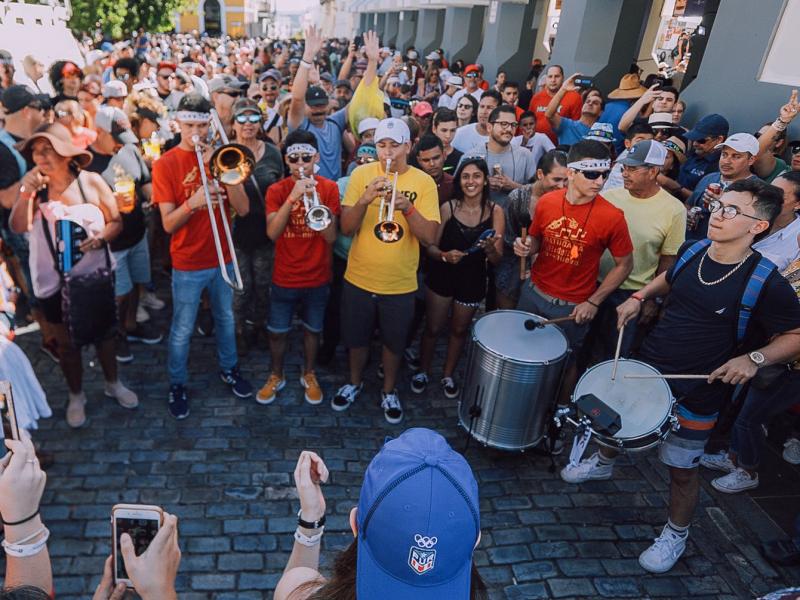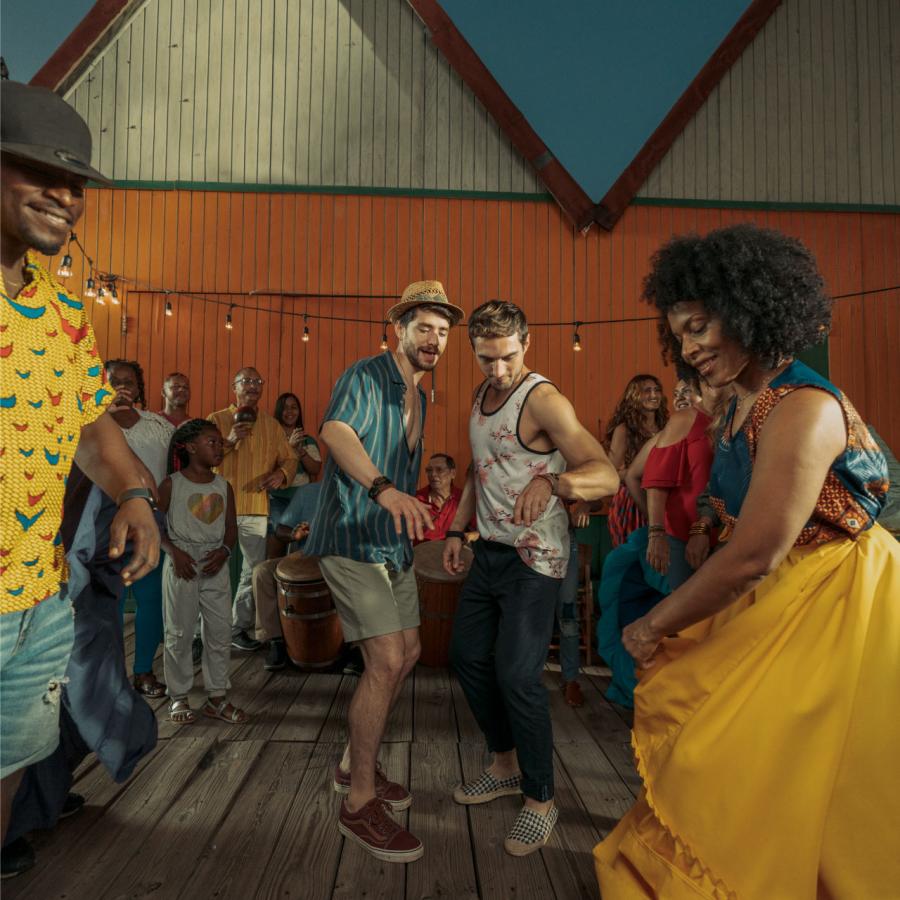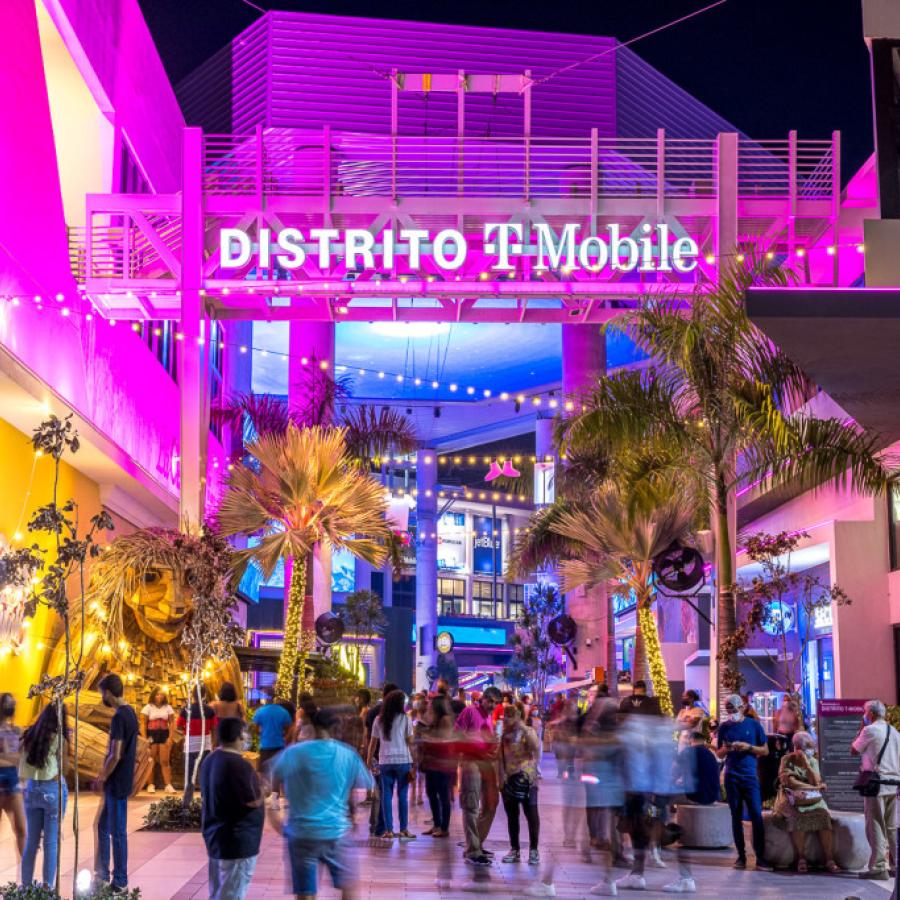Music is at the heart of Puerto Rican culture.
From the minute you get off the plane, music fills the air. It's a keystone of Puerto Rican culture and entertainment—whether you’re walking the streets of San Juan, celebrating at a small-town festival, or spending a day at the beach.
While there’s music of diverse genres throughout the Island, we’ve brought together some of the most traditional and well-known music from Puerto Rico to get you started! So, here’s a quick primer on the genres of music you'll be listening to during your stay in Puerto Rico.
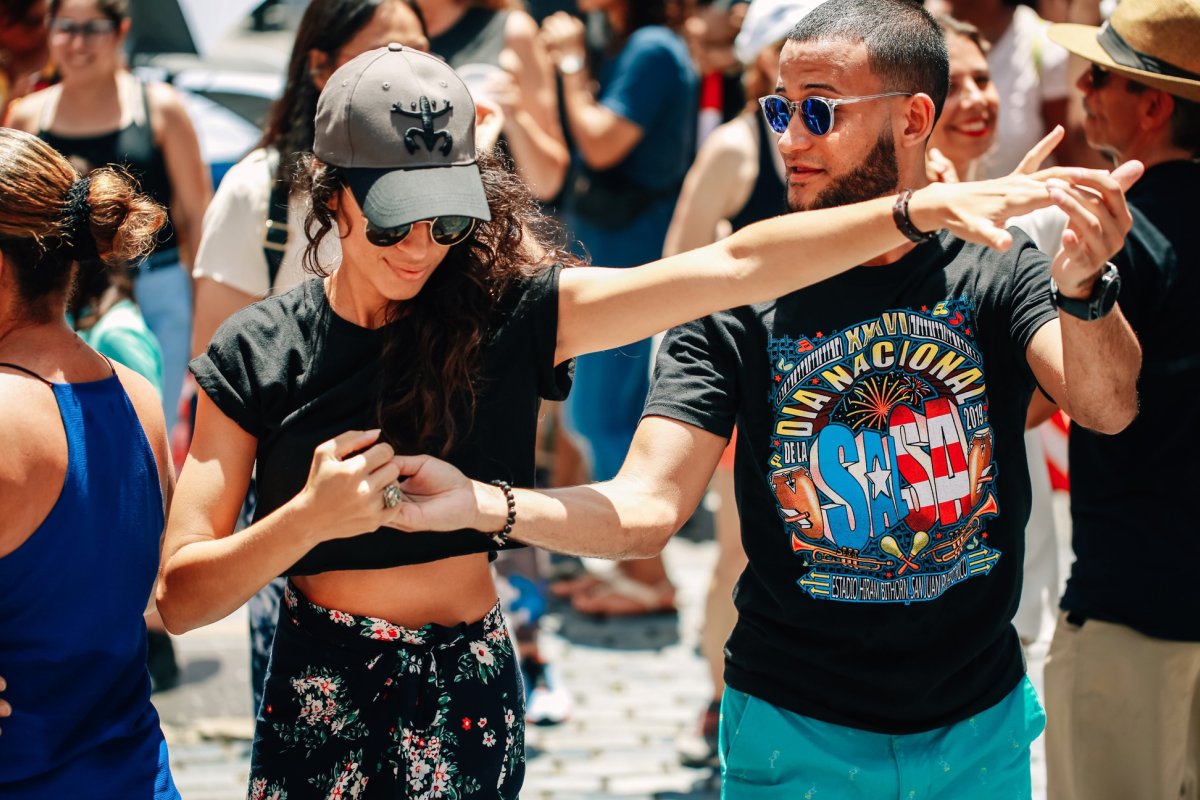
Salsa
This is a style of dance music popularized in New York City during the 1960s by Cuban and Puerto Rican musicians. While the base of modern salsa is Cuban son— a style of music that combines popular Spanish songs with Afro-Cuban percussion, Puerto Rican salsa, in particular, is known for its strong influence from jazz and big band music. It has sub-genres like salsa romántica (romantic salsa), which has a slower, softer sound, and salsa gorda or dura, a style that features a fast, driving beat and long instrumental segments. Some of the best-known classic salsa performers and composers from Puerto Rico or of Puerto Rican descent include Tite Curet Alonso, Ray Barretto, Héctor Lavoe, Cheo Feliciano, Willie Colón, Ismael Rivera, Andy Montañez, Roberto Roena, Richie Ray and Bobby Cruz, El Gran Combo de Puerto Rico, and La Sonora Ponceña.
More modern salsa singers to reach even higher levels of commercial success include Marc Anthony, Victor Manuella, La India, Gilberto Santa Rosa, and the Rivera brothers Jerry and Edwin.
Merengue
Merengue is a style of danceable music that originated in the Dominican Republic and spread throughout Latin America and the United States. While not native to Puerto Rico, merengue became a significant part of the Puerto Rican music scene in the late 1980s. Merengue típico or perico ripiao is the traditional style that uses string instruments like guitars and bass, accordion, conga, and other drums, and can be either fast-paced with a marching dance step (known as merengue derecho) or slower-paced with syncopated rhythm (known as pambiche). There's also merengue de Orquesta, or big band merengue, which is also a popular style to dance to and incorporates more instruments. Popular merengue performers from Puerto Rico include Elvis Crespo, Olga Tañón, Gisselle, Manny Manuel, Grupomanía, Limi-T 21, and more.

Take center stage at Loíza with a bomba class.
Bomba
Bomba is a traditional style of Puerto Rican music and dance that highlights the African heritage of the Island. It features three main instruments: maracas, cuá (two wooden sticks), and the bomba barrel, a large drum played with the hands. In bomba performances, there is a dynamic interaction that simulates a dialogue between musicians and dancers. The drums follow a hierarchy, with one being the Primo Barrel, which marks the rhythm that the dancer is stepping to, while the Buleador drum supports that beat. The dancer provides piquetes, or improvised bomba steps, using their body and skirt (or just the body if the dancer is not wearing the bomba skirt), challenging the Primo Barrell to keep up with them. The singer marks the length of the song and plays the maracas.
Plena
Plena is another genre of music that originated in Puerto Rico that features African, Spanish, and Caribbean influences. The traditional instruments include panderos (hand drums of different sizes), guitar, cuatro (the traditional Puerto Rican guitar that originally had four strings), accordion, and often brass instruments like trumpet and saxophone. For decades, this was considered folk music, and in rural communities, it was called the "sung newspaper" since the songs would tell about recent news or gossip in the town. Like Bomba, the style nearly died out in the mid-twentieth century but was kept going by folk music groups that would perform during the holidays. Bomba and Plena had a resurgence recently, and many contemporary Latin music artists have recorded Plena songs. There are even modern plena bands that can often be heard at town festivals and events like Plenéalo, Plena Libre, Viento de Agua, Pleneros del Más Allá, Pura Plena, Pleneros de la Cresta, and others.
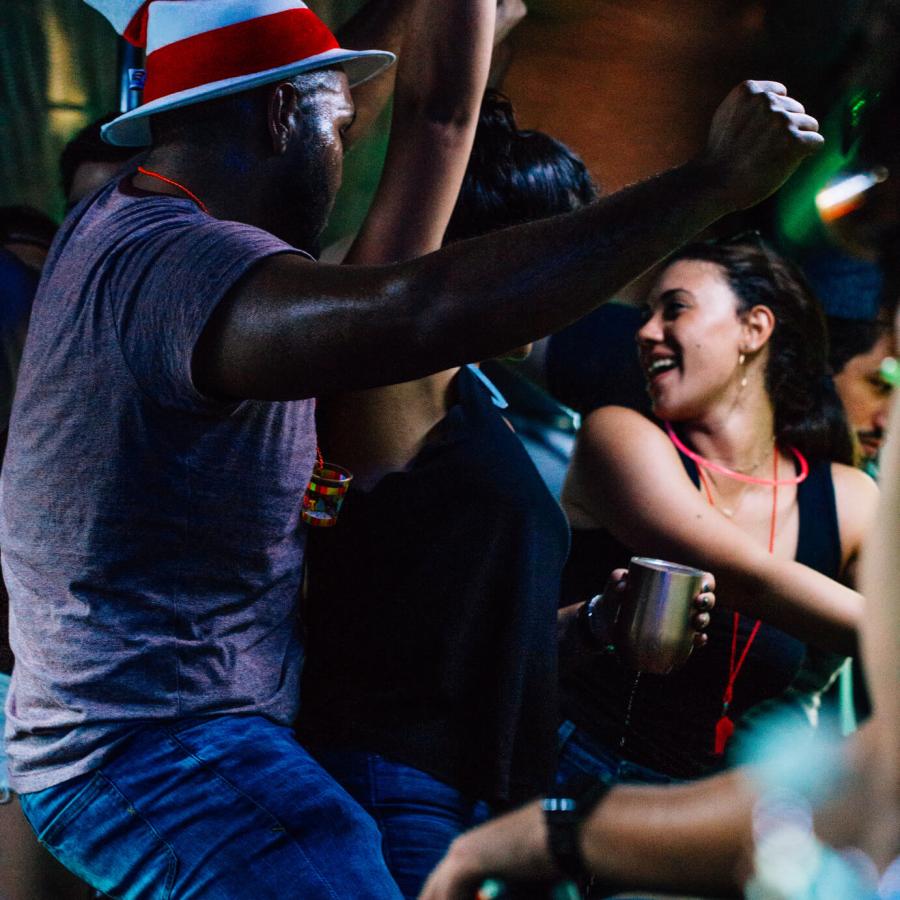
A night of dancing to Reggaetón.
Reggaetón
Reggaetón is an urban music genre that fuses hip hop with Latin American and Caribbean styles of music and which originated in Puerto Rico in the 1990s. Songs include both rapping and singing with a driving, pulsing beat. Some more experimental tracks incorporate musical styles like reggae, bachata, merengue, and cumbia. The contents of the song are often a source of controversy, focusing on sex, drugs, violence, and love. Famous reggaetón artists include Daddy Yankee, Wisin y Yandel, Don Omar, Ivy Queen, Calle 13, Tito El Bambino, Nicky Jam, Tego Calderón, Alexis y Fido, Luny Tunes, and many others.
Reggaetón also influenced the development of Latin Trap music, led by Bad Bunny, Eladio Carrión, Ozuna, De la Ghetto, and Anuel AA, which fuses mainstream trap with reggaetón beats and lyrics in Spanish
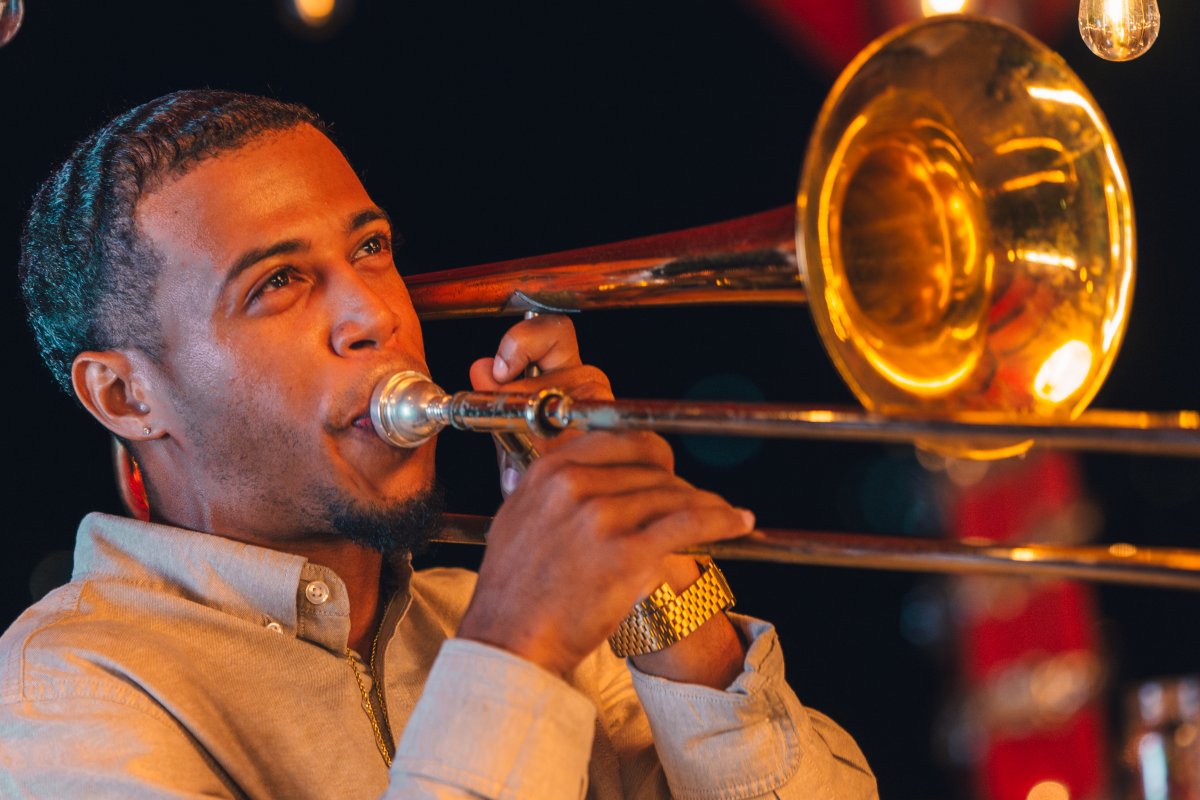
Enjoy enthralling live performances of Latin Jazz in Puerto Rico.
Latin Jazz
You may not think of jazz when you think of Puerto Rico, but Boricua musicians played a major role in the evolution of Latin Jazz. This highly energetic and vibrant subgenre originated by Cuban, Puerto Rican, and Latin American musicians who moved to New York City in the early 20th century. They began merging the Caribbean and Latin American more upbeat structures and rhythms with classic jazz and blues sounds. Besides the typical instruments used in jazz, like trumpets, saxophones, drum kits, and basses – Latin jazz emphasizes percussion instruments, including timbales, congas, and bongos, as well as claves, güiros, and other instruments that reflect the Latin influences. The distinctive style of Latin Jazz can be quickly recognized by its lively sound and a more dance-friendly feel. Tito Puente, Juan Tizol, Ray Barreto, Eddie Gómez, Best Latin Jazz Album Grammy Winner Miguel Zenón, David Sánchez, John Benítez, and Jerry González are some of the most notable Latin Jazz musicians from Puerto Rico or of Puerto Rican descent.
Décima
Décima music, deeply rooted in Spanish traditions, is a form of poetic expression set to music. In Puerto Rico, the décima is written, recited, and sung during special events, especially around the holiday season. You may also hear the term trova, which refers to an improvised version of a décima.
Décimas follow the traditional structure known as Décima Espinela, typically composed of four stanzas (or cuartetas) of ten lines each. These lines generally consist of seven to nine syllables and follow a specific rhyme pattern. Closely related to the décima is the aguinaldo, sometimes known as a decimilla. These songs often talk about the life of the Puerto Rican jíbaro, a traditional farmer, reflecting on themes of love, the human condition, honor, and so much more. Décima music has been passed down through generations as a means of cultural preservation. While Salvador Brau pioneered the décima on the Island, poetry titans like Cayetano Coll y Toste, Lola Rodríguez de Tió, Virgilio Dávila, Juan Antonio Corretjer, and Joaquín Mouliert helped cement its status
Paradise for Your Inbox
Get travel inspiration, news, tips and more delivered monthly.
